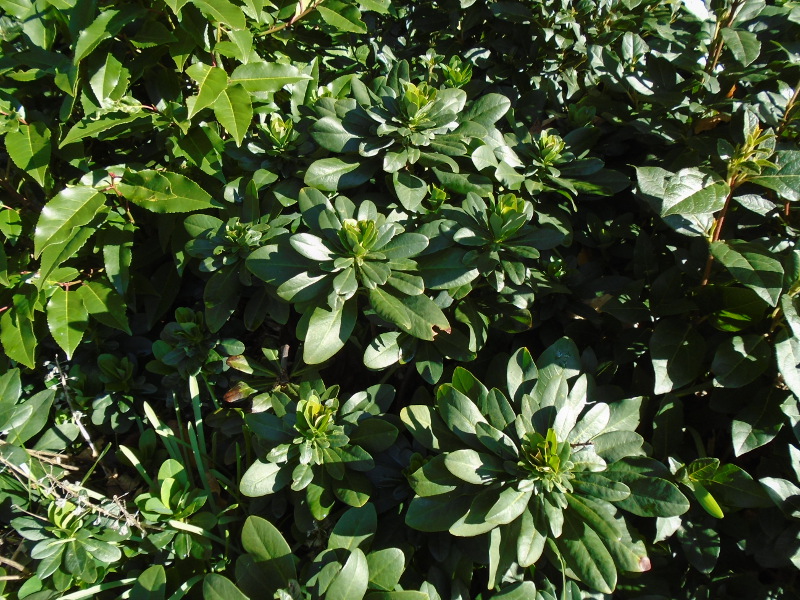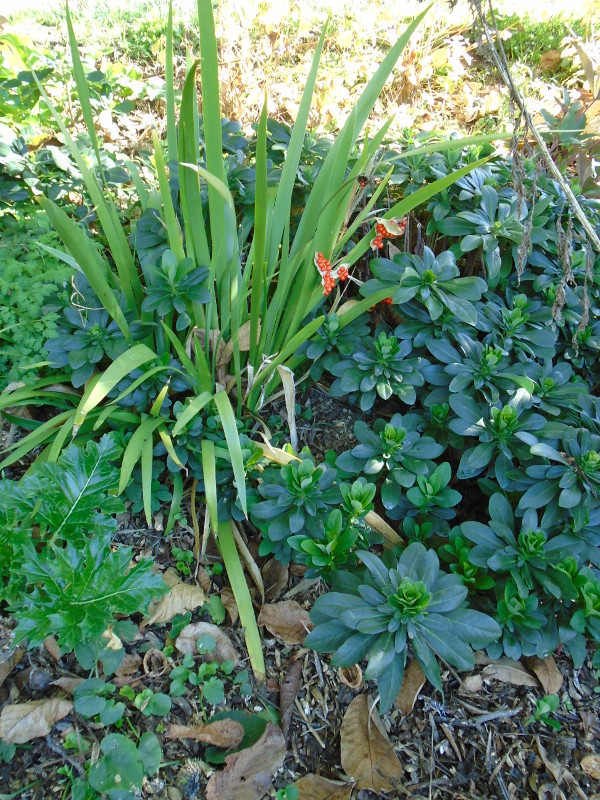Ground cover plants – euphorbia
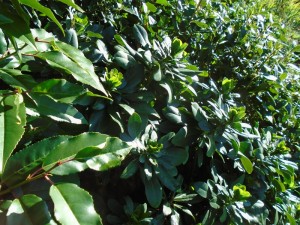 Ground cover. There is nothing vague or wafty about that phrase. You want a plant to cover the ground.
Ground cover. There is nothing vague or wafty about that phrase. You want a plant to cover the ground.
But what I love about gardening is that things evolve. And grow. Or die. Or take over so successfully you wonder why on earth you planted it.
If I could go back to the 1970s, I would ask the people who took on our farm to desist from planting periwinkle (vinca minor). It is seriously invasive. It is all over the lower terraces, and up in the forest. It spreads very cleverly by throwing runners which are serious trip hazards when you aren’t looking at your fee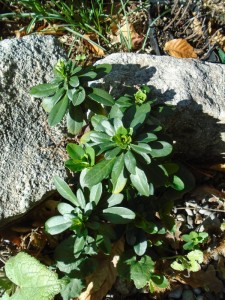 t.
t.
In fact the only good thing about it is that when I am walking up around the very top of the mountain I know where our land begins. There is a carpet of this green creature oozing up through the undergrowth.
I’ve never taken a photo of it as the sight makes me shudder. This is not a plant you want in your garden. But if you want to see a picture, try this: http://plants.usda.gov/core/profile?symbol=VIMI2
I like this website: it’s from the United States Department of Agriculture. Natural Resources Conservation Service. There you can learn all about the plants you are poised to put into your garden and may want to think twice.
 The best bit is the classification tab where you can find just where your plant sits in the animal kingdom. And who knew that the periwinkle is in the dogbane family? Apocynaceae.
The best bit is the classification tab where you can find just where your plant sits in the animal kingdom. And who knew that the periwinkle is in the dogbane family? Apocynaceae.
Now you will always remember periwinkle, it’s a dog of a plant and a bane to anyone trying to remove it.
So what do you plant when you need to cover the ground?
I have two candidates 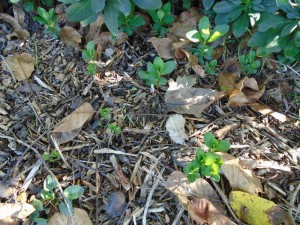 for different sites: stachys for sun and euphorbia for shade. But it all comes with the caveat that it can become invasive. But unlike the periwinkle, these two plants can easily be removed and potted up and handed on.
for different sites: stachys for sun and euphorbia for shade. But it all comes with the caveat that it can become invasive. But unlike the periwinkle, these two plants can easily be removed and potted up and handed on.
I inherited mine. And this blog is devoted to my favourite euphorbia, Mrs Robb’s Bonnet. Or Euphorbia amygdaloides var. robbiae. Spookily, it’s not in the USDA website, but that might be because it’s a native of…..pause while I don’t make a fool of myself…..Europe, Central Asia and the Mediterranean. Well that’s covering a lot of ground. You can find details about it here https://www.rhs.org.uk/plants/details?plantid=2923
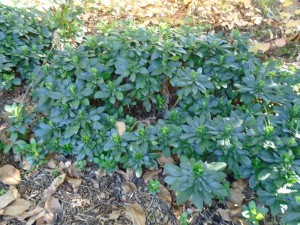 My plants came from Andrew who thought it would do very well in the shade of the huge walnut tree and in the shade garden near the potting shed.
My plants came from Andrew who thought it would do very well in the shade of the huge walnut tree and in the shade garden near the potting shed.
It was planted in April 2013 as small individual plants. So in two and a half years here is the result. This is not a plant you want to cram near any others. It has tried to take over the space where the iris foetedissima is growing. So that is where I take the new growth and pot them up to give away.
I always think you should only plant ground cover candidates in an area where there is a natural barrier to prevent its spread. A wall, a path made of different material, a road. That way you can control it by mowing the area, driving over it with a car, or just spotting the escapees easily before it’s too late.
Beware any website that tells you this plant is ‘slighty stoloniferous’. Slightly? That is how it grows! It throws out stolons or runners and that is how it spreads. Mine is in clay soil in the shade of the walnut bank; and in ve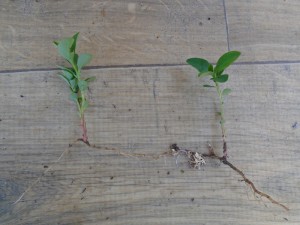 ry poor acid free draining soil in the shade garden. It does better on clay.
ry poor acid free draining soil in the shade garden. It does better on clay.
And actually can suffer from sunburn in the blazing sun of a southern France drought and heat wave.
The best thing about this particular euphorbia is it doesn’t grow too tall, looks brilliant all year round and you get the thrill of more colour in spring.
But you do have to watch the sap. I always wear gloves when I work with it.
And I just hope that in thirty years time the next gardener doesn’t shake their fist at me and wonder why on earth I insisted on growing so much of the stuff.
